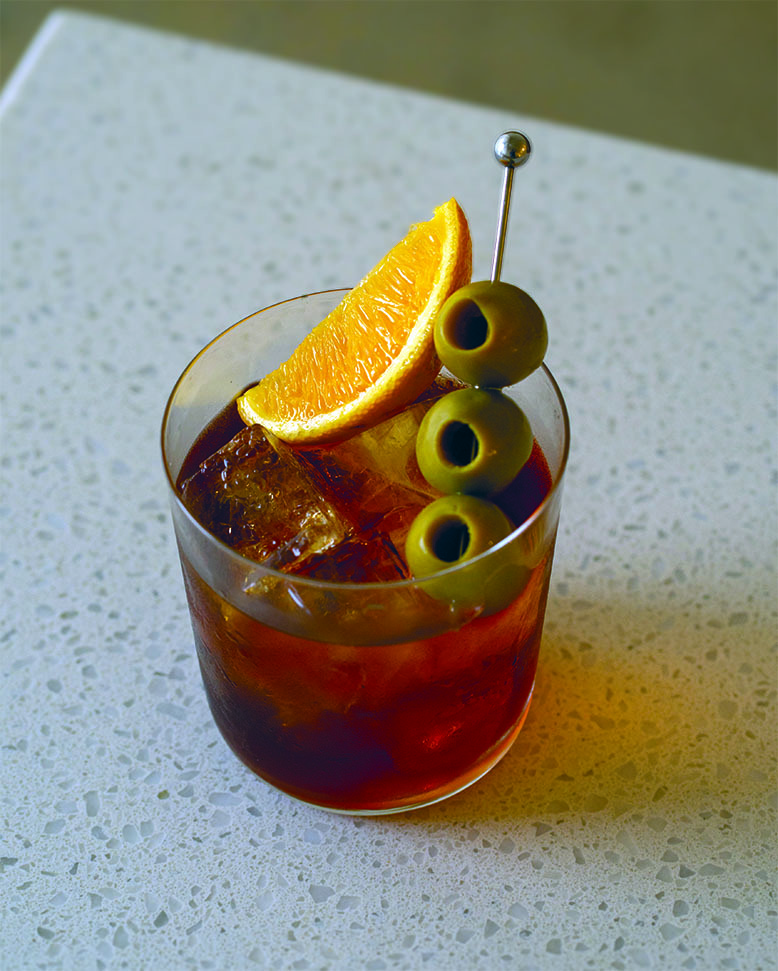
Rosso, Italian for red, is a sweet vermouth. In Spain, it’s traditionally served with an orange wedge to accompany tapas. Photo: Courtesy of LITA
Thanks to the cocktail renaissance of the early 2000s, vermouth has slowly regained its status as an essential element in a great Manhattan or Negroni. But the vermouth category is diverse and versatile, and the best shine even brighter when sipped straight.
Remember, vermouth is not actually a spirit. It’s a fortified wine aromatized with herbs and botanicals such as wormwood, cinnamon, orange peel, star anise, cardamom, chamomile and Angelica root. And because it’s a wine, you can drink it like one.
While dry vermouth is familiar as a mixer, “it’s not the most palatable thing to drink,” admits Ricardo Rodriguez, beverage director at Lita in Aberdeen Township, the new Iberian restaurant from Neilly Robinson and chef David Viana.
For sipping, Rodriguez prefers blanc or bianco vermouth, which has a little more sugar. Even better is sweet vermouth (also called rosso), a robust and rich style, reddish-brown in color and commonly consumed before a meal in Italy and Spain. Madrid abounds in historic vermouth bars called vermuterías, where the aperitif is served neat, chilled, or on ice and garnished with orange or lemon. Paired with green olives and tapas, the drink is the perfect antidote to a hot summer day.
[RELATED: The 30 Best Restaurants in New Jersey]
“It was a no-brainer to add vermouth on the menu,” Rodriguez says. “It’s such a huge part of Spanish culture, and it goes hand-in-hand with food.” To showcase its many styles, Rodriguez included three styles: rosso, rosé and blanco. Just as you’d find in Madrid, Valencia or Catalonia (but less likely anywhere else in New Jersey), Lita serves vermouths with an orange wedge and a side of olives. “People see that [presentation] and, surprisingly to me, are kind of interested in drinking it,” he says.
Considering vermouth’s lingering reputation as “something to be left on a bar top or counter to oxidize,” Rodriguez has been encouraged by how quickly patrons have embraced the idea of drinking it by itself. “When people have vermouth for the first time,” he says, “they’re kind of surprised by how much they do enjoy it, because it’s not something they’re used to. Or the vermouth they have been exposed to has been improperly cared for.” (Pro tip: The best way to store an open bottle is in the fridge; this keeps it from spoiling quickly.)
As the low-proof cocktail movement continues to gain traction, Rodriguez expects vermouth to continue to grow in popularity. “Now, when I do go out, I ask for vermouth on the rocks with an orange wedge,” he says. “It’s a way I like to start my meal. And it’s a way to casually drink without having to consume hard alcohol.”
No one knows New Jersey like we do. Sign up for one of our free newsletters here. Want a print magazine mailed to you? Purchase an issue from our online store.
